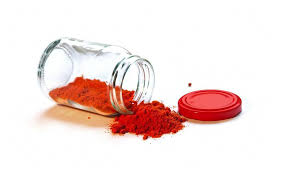Have you ever looked at the ingredients on your favorite snacks and saw words you can’t pronounce? There’s a high chance these ingredients are highly toxic and banned in other parts of the world. Read this article to find out what you’re eating.
Popular Foods
Unknowing to the American public, many staple snacks and products are filled with unhealthy chemicals and preservatives. Here are just a few:

Ritz Crackers – Banned in Hungary, Austria, Switzerland, Denmark, Norway, Iceland, Canada, Brazil, and the UK because they contain trans fats such as hydrogenated cottonseed oils, soybean oils, and potassium bromate.
Skittles – Banned in the European Union and Norway because they contain dyes such as red 40, yellow 5 and 6, and titanium dioxide. A titanium-dioxide free version of skittles is sold across the EU, however.
Twinkies – Banned in Austria, Finland, Norway, and labeled with a warning in the EU because of yellow 5 dye, red 40, and high fructose corn syrup.

Mountain Dew – Was/is banned in Japan, England, Northern Ireland, Scotland, and Wales because it contains Brominated Vegetable Oil.
Froot Loops – Banned in France, Austria, Norway, and Finland because they contain red 40 and yellow 5.
Maraschino Cherries – Banned in Austria, France, Finland, Norway, and the UK because they contain red 40.
Instant Stuffing – Banned in the UK, Japan, and the EU because it contains butylated hydroxyanisole and butylated hydroxytoluene.
Ingredients and their effects
Brominated Vegetable Oil: Also known as BVO, this additive is often added to citrus drinks to keep the citrus flavoring from floating to the top. Many FDA studies show that this ingredient causes adverse health effects in animals.
CottonSeed Oil: If unrefined, this can contain a toxin called gossypol, which can cause liver damage, infertility, and more. This oil is sometimes used as a pesticide.

Hydrogenated Soybean Oil: The hydrogenation process of these oils creates trans fats, which are harmful to our health as they may increase blood sugar levels, inflammation, and cholesterol.
Potassium Bromate: An oxidizing agent used to improve bread properties. It is labeled as a potential human carcinogen, meaning that it can cause cancer. It is also associated with kidney damage.
Titanium Dioxide: An inorganic chemical that is used to dye or whiten products and absorb water, and it is also found in industrial products such as paint.
Butylated Hydroxyanisole: Also known as BHA, this is used as a preservative and antioxidant. Unfortunately, it can cause cancer in animals and affect their hormones, but there isn’t enough data to prove these effects in humans.
Butylated Hydroxytoluene: Also known as BHT, this is a synthetic antioxidant that prevents vegetable oils from going bad. There are suspicions that this can cause blood clotting.
Yellow 5: Also known as tartrazine, some research points towards correlation with increased hyperactivity in children, allergic reactions such as asthma, and behavioral changes such as depression, irritability, etc. A rat experiment proved that the dye increased the number of lymphocytes/eosinophils (white blood cells).
Yellow 6: Similarly to Yellow 5, this is known to cause allergies and hives, kidney tumors, hyperactivity, and nausea.
Red 40: As the most popular dye, it may contain cancer-causing contaminants such as benzene and is linked to increased hyperactivity, allergies, skin irritation, migraines, and depression.

Unfortunately, the list of banned foods extends beyond snacks. It has grown to also include pre-packaged U.S. ground beef, U.S. pork farmed salmon, U.S. milk, U.S. chicken, and conventional corn. These products are widely banned across the EU and Japan, Canada, New Zealand, etc. The main reasons for these bans are because of the antibiotics and hormones fed to U.S. cattle, the pesticide sprayed on corn, or the chlorine sprayed on chicken. Yes, you read that right. U.S. chicken goes through a chlorine wash in order to supposedly remove harmful bacteria. This is frowned upon across the European Union as Europeans state that the chlorine wash could be used to make up for poor hygiene elsewhere on farms.
Dyes, oils, chemicals…it’s a lot to take in. Although it may be overwhelming, you don’t have to jeopardize your health just to fill your stomach. Moving to the EU might seem like the easy way out, but you can focus on eating whole food products and be aware of what you’re putting in your body. Remember, health doesn’t have to be hard!
Works Cited:
15 American foods that are illegal in other countries. (n.d.). https://rock929rocks.com/listicle/15-american-foods-that-are-illegal-in-other-countries/
5 American Food Ingredients That Are Banned Abroad. GoodRx, GoodRx, 21 Feb. 2024, www.goodrx.com/well-being/diet-nutrition/american-foods-banned.
Food Dyes: Harmless or Harmful? Healthline, 7 Jan. 2017, www.healthline.com/nutrition/food-dyes#TOC_TITLE_HDR_6.
Health vermont. https://www.healthvermont.gov/sites/default/files/documents/pdf/ENV_CDP_25013_16_5_BHA.pdf
Why Cases of Mountain Dew, Jolly Ranchers, and Swedish Fish Were Just Seized in the UK. Food & Wine, www.foodandwine.com/mountain-dew-jolly-ranchers-swedish-fish-seized-uk-8415227#:~:text=That.
What Is Hydrogenated Vegetable Oil? Healthline, Healthline Media, 25 Sept. 2019, www.healthline.com/nutrition/hydrogenated-vegetable-oil#side-effects.
World Population Review. https://worldpopulationreview.com/country-rankings/why-are-ritz-crackers-banned-in-other-countries/
XTalks. https://xtalks.com/top-8-american-foods-banned-in-other-countries-3495/








